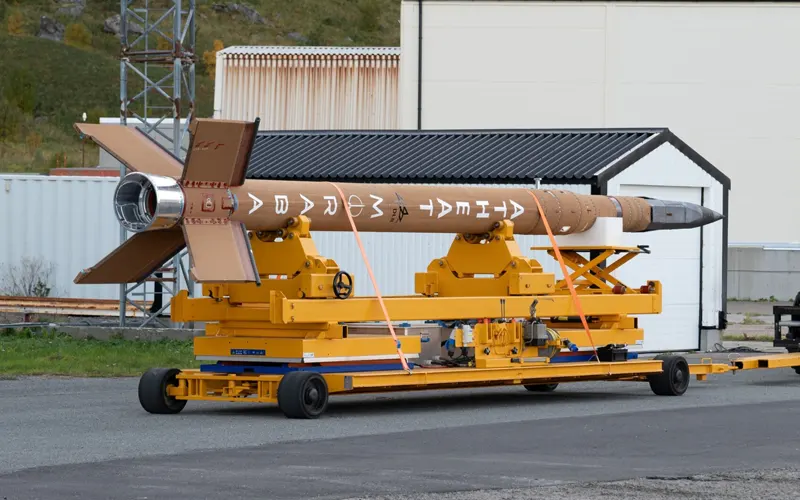 Credit: DLR / Andøya Space / MORABA
Credit: DLR / Andøya Space / MORABA
The German Aerospace Center (DLR) is preparing to launch its ATHEAt reusable space transportation demonstrator mission from Andøya Space in Norway.
Initiated in January 2022, the Advanced Technologies for High Energetic Atmospheric Flight of Launcher Stages (ATHEAt) demonstrator programme is focused on testing key technologies for future reusable space vehicles, with a particular emphasis on the re-entry phase of flight. A secondary objective of the initiative is the development of a hybrid rocket booster intended for use as a future sounding rocket upper stage.
The first ATHEAt launch will be managed by the DLR MORABA team and is slated to take place between 3 and 11 October, with daily launch windows between 10:30 and 16:45 CET. The mission will test materials, cooling techniques, miniaturised non-intrusive sensors, and the aerodynamic properties of its design. The flight will be launched aboard a two-stage sounding rocket, with a Red Kite powering its first stage. The Red Kite booster was developed by DLR in partnership with Bayern-Chemie. The second stage will be powered by a Canadian-built Black Brant Mark 4 booster.
A second launch, scheduled for 2026 from Esrange Space Center in Sweden, will mark the inaugural flight of the Alduina hybrid rocket booster. Powered by hydrogen peroxide and HTPB, the booster is designed to enable throttleability and reignition while maintaining low system complexity.
On 2 October, the DLR Institute of Aerodynamics and Flow Technology announced that the first Alduina Composite Overwrapped Pressure Vessel (COPV), manufactured by the DLR Institute of Lightweight Systems, had successfully completed a key qualification test. The COPV will store and supply hydrogen peroxide oxidiser for the booster. According to the institute, a burst test was not required because of the “conservative tank design.”
While DLR has not formally linked the two programmes, the Alduina upper stage will likely complement the Red Kite first stage to create a two-stage sounding rocket produced entirely in Germany. The agency has previously stated that Red Kite can also be employed in a two-stage configuration. However, this configuration would not provide the throttleability and reignition capabilities offered by the Alduina upper stage.
